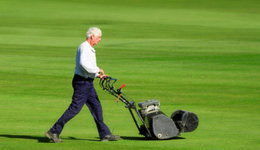Ageing productively through design
The research
The first phase of this research involved a questionnaire survey of 21 organisations which explored work tasks, environments, the design of work equipment, musculoskeletal symptoms, workability and views on ageing at work.
Four organisations then continued their collaboration for the in-depth data collection phase of the research project; interviews, ergonomics observations and focus groups, these were used to explore and co-develop solutions to workplace design issues.
The in-depth data collection involved work-shadowing workers in a range of jobs; workers in office environments, in confined spaces, people working with hand-tools and people who work from their vehicles. This was across three industries; construction, manufacturing and animal welfare. The focus was to look at the impact on health and comfort when performing work tasks with the equipment used by workers to complete these tasks in their specific work environments. For example, with joiners we looked at their use of hand-tools on health and comfort when sawing, drilling/driving and hammering/fixing. Within the construction industry we also observed the work practices and environments of the mobile-office staff, who work both on-site and in ‘temporary’ office/desk space which are not necessarily designed around their needs.
During the focus groups ideas and solutions were co-design and explored with workers. The focus groups centred on the needs of the users and their specific job/work tasks. To aid the discussion and co-design process, artefacts were produced, these included: Action cards, Product cards, Body cards, and Blank cards people could draw on
The in-depth data collection was used to inform and co-develop the Organiser for Working Late (OWL) design resource. OWL contains tools to help workers of all ages to think about healthy working, ergonomics and workplace design. Please visit www.workinglate-owl.org to access the OWL resource.
The design resource
The OWL resource aims to support line managers in facilitating healthy ageing at work through design. OWL is presented in two sections; “The body at work” and “Workplace design & healthy ageing”.
- “The body at work” presents the co-designed resources available in OWL; the four types of @ work cards (body, action, equipment and weather) can be used with workers to think about and discuss health in relation to good design and poor design at work. Prompt questions, example personas, meeting planners and other support materials are also available to help when planning and running sessions where health, age, work and design are the focus.
- “Workplace design & healthy ageing” presents some of the many (over 200) design ideas and solutions created with workers in four specific task areas. The personal stories presented in this section aim to inspire you.
The @ work cards
News »
- Walking Works Wonders logo design competition
November 13th, 2014 - Walking Works Wonders Branding Competition Launch
August 13th, 2014 - Exciting new commercialisation project launched
August 13th, 2014 - A New Dynamic of Ageing
October 22nd, 2013 - NDA Findings 22
September 25th, 2013 - Research Councils UK Parliamentary Reception features Working Late
June 10th, 2013 - Eurofound FSS 2013 Working Late
May 25th, 2013

